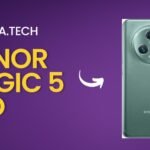In the ever-evolving world of Internet of Things (IoT), one key challenge that businesses face is navigating the complex web of standards and protocols. From Zigbee to MQTT, understanding how these technologies work together can be like connecting dots in a vast puzzle. In this blog post, we will unravel the mysteries surrounding Connecting the Dots: Unraveling IOT Standards and Protocols, helping you make sense of the jargon and providing insights into how they impact your IoT strategy. So grab a coffee, sit back, and get ready to connect the dots with us!
Introduction to Connecting the Dots: Unraveling IOT Standards and Protocols
Welcome to the Connecting the Dots: Unraveling IOT Standards and Protocols world of IoT, where devices communicate seamlessly to make our lives easier. Imagine your coffee machine brewing your morning cup as soon as your alarm goes off or your thermostat adjusting the temperature before you even walk through the door. This is all made possible by standardization and protocols in IoT, weaving a web of connectivity that powers our modern-day conveniences. Join us as we dive into the realm of IoT standards and protocols to unravel their significance and impact on our daily lives.
What are Standards and Protocols in IoT?
In the world Connecting the Dots: Unraveling IOT Standards and Protocols play a crucial role in ensuring seamless communication between connected devices. Standards are like rules that govern how devices should interact with each other, ensuring compatibility and interoperability. They set the guidelines for things like data formats, security measures, and communication protocols.
On the other hand, protocols are like languages that devices use to communicate with each other over networks. These protocols define how data is transmitted, received, and processed between devices in an IoT ecosystem. Common examples include MQTT for lightweight messaging, CoAP for constrained environments, and HTTP for web-based communications.
Overall, standards and protocols form the backbone of IoT systems by providing a common language for different devices to connect and exchange information securely and efficiently.
Common Standards Used in IoT: Wi-Fi, Bluetooth, Zigbee, Z-wave
When it comes to IoT, connectivity is key. That’s where common standards like Wi-Fi, Bluetooth, Zigbee, and Z-wave play a crucial role in enabling devices to communicate seamlessly with each other.
Wi-Fi is ubiquitous, allowing for high-speed internet access and data transfer over a wireless network. Bluetooth is ideal for short-range communication between devices like smartphones and smart home gadgets.
Zigbee is known for its low power consumption and ability to support networks with hundreds of devices, making it perfect for IoT applications in smart homes or industrial settings. Z-wave offers reliable communication over longer distances compared to other protocols.
Each standard has its strengths and specific use cases in the IoT ecosystem. As technology continues to evolve, these standards will likely adapt and improve to meet the demands of an increasingly connected world.
Read More: Demystifying SAST, DAST, IAST, And RASP
Understanding the Role of Protocols in IoT: MQTT, CoAP, HTTP
In the vast ecosystem of the Internet of Things (IoT), protocols play a crucial role in enabling communication between devices. MQTT, known for its lightweight nature, is widely used for efficient data transfer in IoT applications. It operates on a publish-subscribe model, making it ideal for scenarios where low power consumption is essential.
CoAP, or Constrained Application Protocol, is designed specifically for constrained devices and networks commonly found in IoT environments. Its simplicity and efficiency make it suitable for resource-constrained devices like sensors and actuators.
On the other hand, HTTP (Hypertext Transfer Protocol) remains a fundamental protocol in IoT due to its ubiquity and compatibility with existing web infrastructure. While not as lightweight as MQTT or CoAP, HTTP’s familiarity makes it an attractive choice for many IoT applications that require interactions with web servers.
Each of these protocols serves distinct purposes within the realm of IoT connectivity. Understanding their strengths and use cases is vital for designing robust and scalable IoT solutions that meet specific requirements.
Advantages and Disadvantages of Standardization and Protocol Usage
Standardization in IoT brings consistency and interoperability, allowing devices from different manufacturers to communicate seamlessly. This leads to a more cohesive ecosystem where various gadgets can work together effortlessly. Additionally, having standardized protocols simplifies the development process for IoT solutions, making it easier for companies to create innovative products.
On the flip side, adhering strictly to standards can limit flexibility and hinder innovation. Some argue that stringent standardization may stifle creativity and impede progress in the fast-paced world of IoT technology. Moreover, with multiple standards competing in the market, there is often fragmentation which could lead to compatibility issues between devices from different ecosystems.
Finding the right balance between standardization and flexibility is crucial in ensuring that IoT continues to evolve efficiently while maintaining compatibility across platforms. It’s essential for industry players to navigate this delicate balance to drive growth and innovation within the Internet of Things landscape.
Challenges in Implementing IoT Standards and Protocols
Implementing IoT standards and protocols comes with its fair share of challenges. One major hurdle is the lack of universal standards across industries, leading to interoperability issues between devices from different manufacturers. This can hinder seamless communication and data exchange within IoT ecosystems.
Security concerns also pose a significant challenge in adopting IoT standards and protocols. With an increasing number of connected devices, there is a higher risk of cyber threats and vulnerabilities. Ensuring robust security measures become imperative to safeguard sensitive data and prevent breaches.
Moreover, the complexity of integrating diverse technologies into existing infrastructures can be daunting for organizations looking to embrace IoT solutions fully. However, having skilled IT support professionals proficient in various protocols can simplify the deployment process and ensure smoother integration. The need for skilled professionals proficient in various protocols adds another layer of complexity to deployment processes.
Additionally, scalability issues may arise as IoT networks expand, requiring constant monitoring and management to ensure smooth operations. Overcoming these challenges demands strategic planning, investment in resources, and continuous evaluation to adapt to evolving technology landscapes.
Future Developments and Emerging Technologies in IoT Standards
As technology continues to advance at a rapid pace, the future of IoT standards and protocols looks promising. Emerging technologies such as 5G networks are set to revolutionize how devices communicate, offering faster speeds and lower latency for seamless connectivity. Edge computing is also gaining traction, enabling data processing closer to the source for quicker response times.
Blockchain technology is being explored for its potential in enhancing security and trust within IoT ecosystems by providing decentralized solutions. Artificial intelligence and machine learning algorithms are being integrated into IoT systems to enable smart decision-making capabilities based on real-time data analysis.
Standard organizations are working towards developing unified frameworks that can facilitate interoperability among different IoT devices and platforms. The evolution of these standards will play a crucial role in shaping the future landscape of connected devices, ensuring compatibility and scalability across various industries.
Overall, the ongoing advancements in IoT standards hold great promise for creating a more interconnected and efficient world driven by innovative technologies.
Conclusion: Connecting the Dots: Unraveling IOT Standards and Protocols
In the ever-evolving landscape of IoT, standards and protocols play a crucial role in ensuring interoperability and seamless communication between devices. As we continue to witness the proliferation of connected devices across various industries, it becomes imperative to adopt a unified approach towards standardization.
By embracing common standards such as Wi-Fi, Bluetooth, Zigbee, and Z-wave along with efficient protocols like MQTT, CoAP, and HTTP, we can unlock the true potential of IoT and drive innovation at an unprecedented pace. However, despite the numerous advantages that come with standardization and protocol usage, there are still challenges that need to be overcome.
Moving forward, it is essential for industry stakeholders to collaborate closely in developing robust standards that address security concerns while promoting scalability and efficiency. Embracing emerging technologies and staying abreast of future developments will be key in shaping the future of IoT standards.
In essence, by fostering a unified approach towards IoT standards and protocols, we can pave the way for a more interconnected world where devices seamlessly communicate with each other – ultimately leading to transformative outcomes across various sectors. Let us continue connecting the dots in unraveling IoT standards and protocols for a brighter tomorrow.










